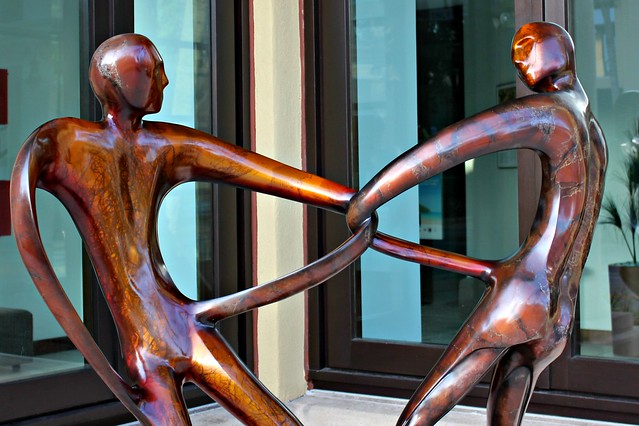Change - it is sometimes welcomed, but more often feared as a negative impact on one's own environment. In fact, change occurs regularly whether we initiate it or not...and when you think about it, there's considerable value being a part of the change's direction and purpose, rather than being a 'victim' of it.
With a resume of nearly forty years in the world of education, witnessing (and instigating) change has been the norm. While I welcome it - especially as an alternative to the 'status quo' - I much prefer to have some influence creating, molding, and guiding it. And, simply put, change is a prerequisite for growth, for innovation - it is the catalyst for creating our futures.
After reading the Introduction to George Couros' The Innovator's Mindset, there were a number of concepts/writings that resonate.
- "We forget that if students leave school less curious than when they started, we have failed them."
- Working with postsecondary technical/vocational and adult (GED) students, there is a strong and common characteristic of being disenfranchised from the 'norm'. The curiosity appears to have left their world long ago - at least in the traditional sense. Our students have not 'fit' into the conventional sense of education, but that doesn't make them any less worthy of learning.
- Perhaps we have failed them in the past, but with an incredible persistence, our students come back for more. We owe them an environment of inquiry and respectful personalization.
- "Think about it: we have the world at our fingertips, the ability to connect and create with people around the globe through so many mediums. Yet what do most schools focus on when talking about technology? 'Cyberbullying' and 'digital safety.' Yes, these are important concepts that should be discussed, but we need to go way beyond that."
- Yes and yes! We definitely need to weave these concepts into our educational structures, but do it in such a way that global connections and creations are prioritized.
- More than six years ago, Tania Sheko (Australia), Sinikka Laakio-Whybrow (Finland) and I (Naples, FL, USA) set up an opportunity for students to connect in an image posting/commenting conversation via Flickr. Though this is a blog post or two of its own, I mention it here as an example of connections being created across time zones.
- "When we tap into the power of we over me, we have the potential for what Steven Johnson refers to as the 'adjacent possible,' creating new aspirations and a powerful vision of what school could and should really be for our organization as learners."
- Love the 'adjacent possible' inferences!! But what is it (really)???
- The process of reinventing ourselves - as teachers, as an educational institution, as a culture - is an ongoing challenge. The quality improvement cycle model is the basis for recreating ourselves to make our work/life/culture better - and it works when you are empowered (whether by others or internally) to see it as a priority.
Change is both simple and complex - it is the fulcrum for innovation. Change is a daily part of life and thus, we can capitalize on innovation every day as well.
 |
| Creative Commons licensed photo credit to Charles Strebor on Flickr https://www.flickr.com/photos/rantz/22082003319/ |












